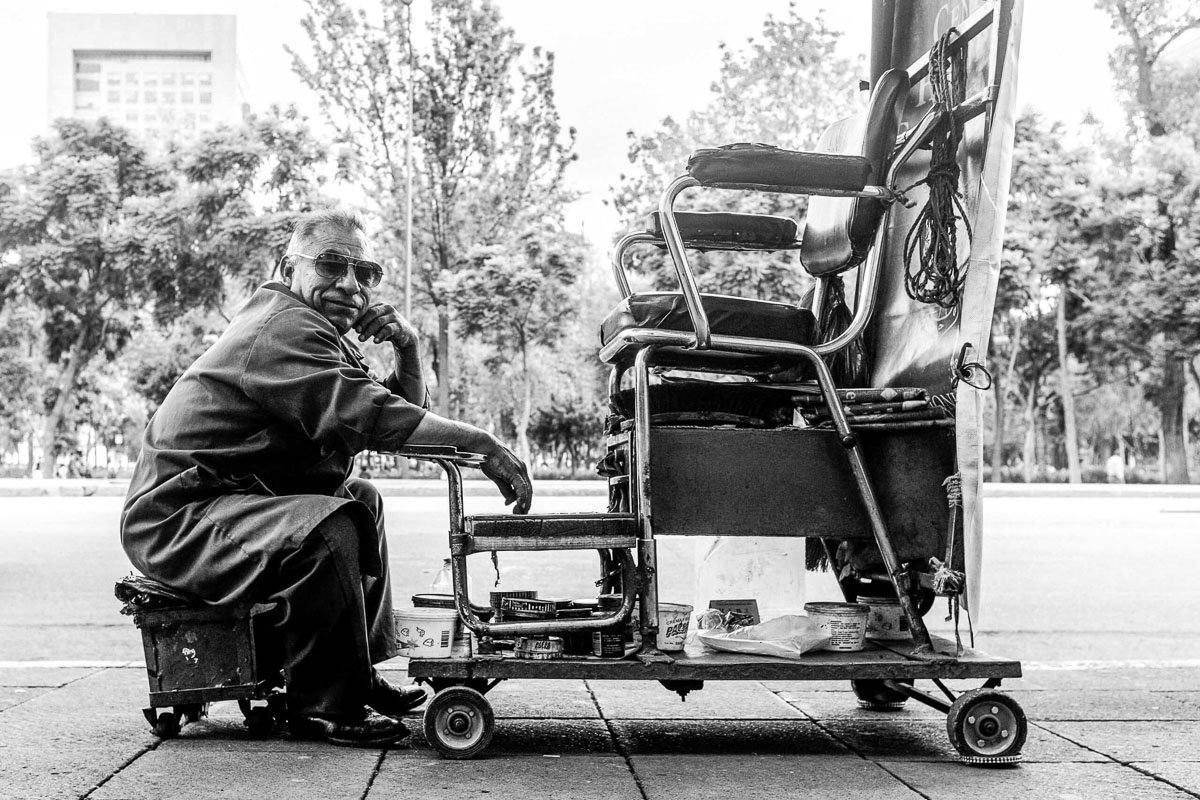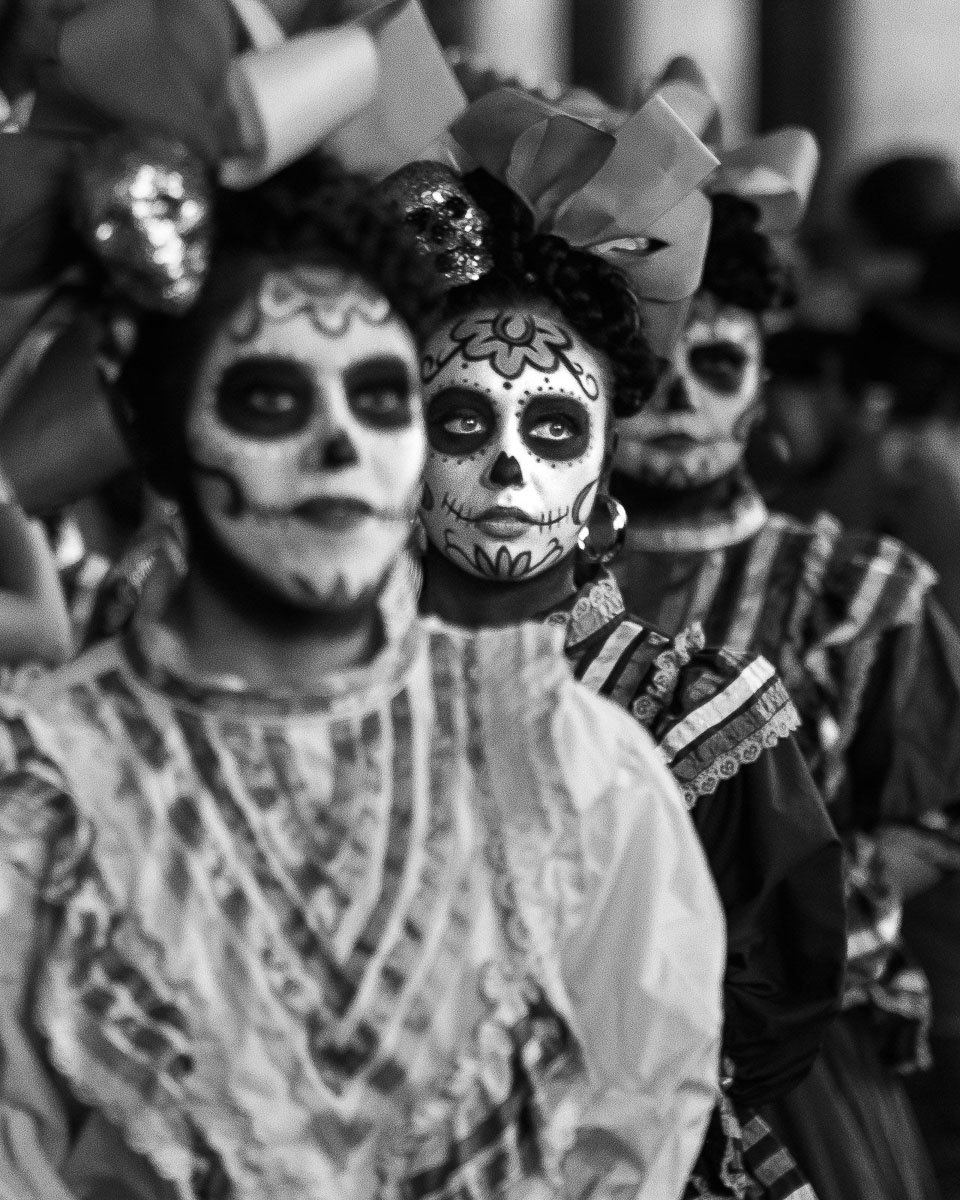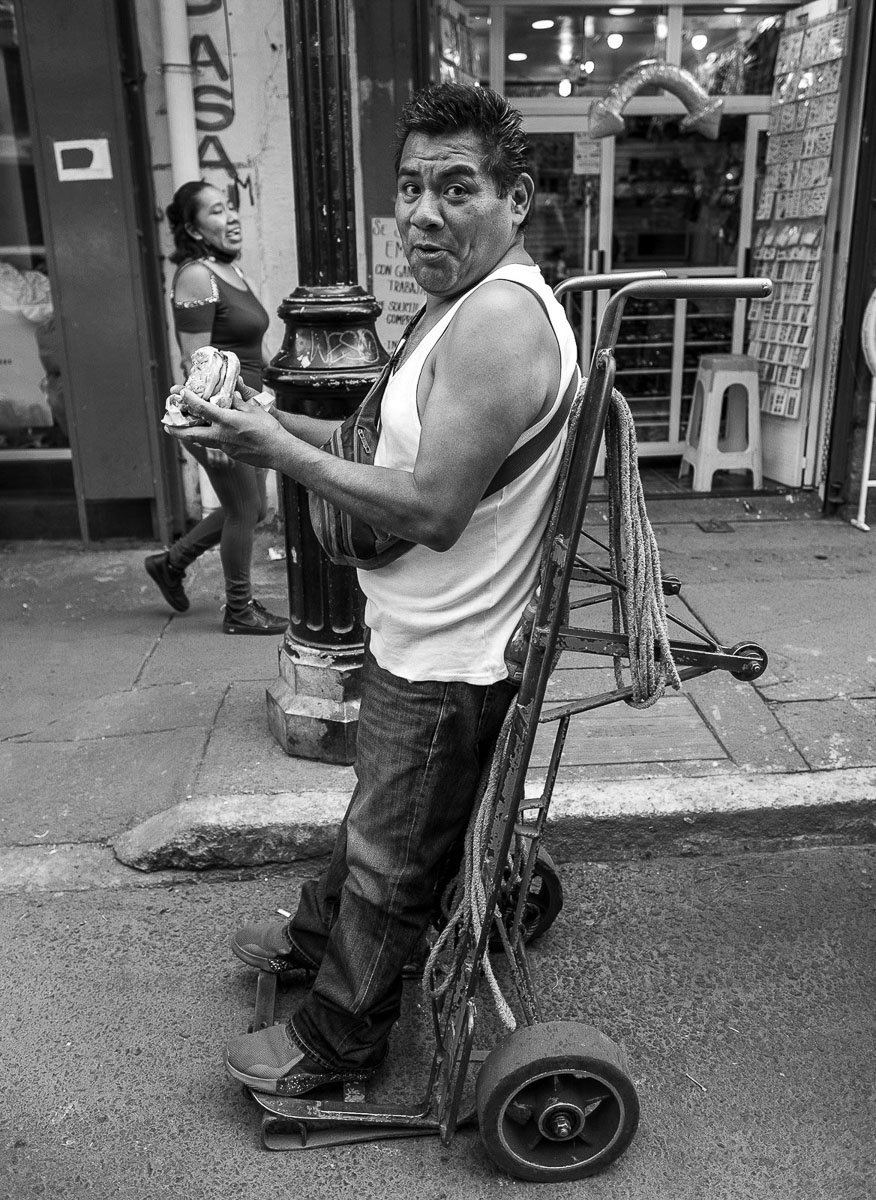My black and white photography
In a world of loud, oversaturated visuals, black and white photography cuts through the noise.
I shoot in black and white to focus on emotion, light, and truth - stripping away distractions so what’s left feels timeless and real.
This is where black and white photography offers a refreshing alternative.
My Black and white photography projects
One of my contrasty black and white photographs, commissioned by Burger King
Burger King: Candid and Award-Winning
For Burger King, I created a campaign that rejected the typical polished food photography in favor of a candid, monochrome street photography style. Shot in Mexico City, the photos captured real people enjoying real burgers in real moments. The raw, unfiltered approach was refreshing and unforgettable, cutting through the clutter of fast-food ads filled with oversaturated images of burgers.
The campaign not only stood out—it won two Cannes Lions and became an exhibition at the Museo Nacional Centro in Mexico City. Agencies looking to blend authenticity with artistry can see how black-and-white photography turns a brand message into a visual experience.
Coca-Cola: Nostalgia and Modernity
A still photograph from my black and white work for Coca Cola
The Coca-Cola campaign took a similar approach, showcasing everyday moments of people enjoying tacos with Coca-Cola, but with a twist: the entire campaign was in black and white, with only the iconic red logo adding a splash of color. This created a striking, gallery-like aesthetic that resonated deeply with audiences. I was hired as their local photographer in Mexico.
By leveraging the timeless appeal of high-contrast noir photography, we gave Coca-Cola’s modern brand a nostalgic, emotional edge. It became more than a product ad—it was a story about connection and joy. The simplicity of the visuals ensured that the brand stood out in a saturated market while feeling fresh and different. See more of my commercial work as a street photographer.




Why Black and White Photography Works for Agencies
As a black and white photographer, I craft visuals that stand out by stripping away distractions and focusing on authenticity, emotion, and timeless appeal.
For agencies looking to break through the noise, B&W imagery can transform a campaign into an experience—resembling an art exhibition that captures attention first and reveals the brand second.
Cutting Through Ad-Blindness
Modern audiences are inundated with ads every day, and the overuse of color in advertising has dulled its impact. Black and white imagery disrupts this pattern. Its simplicity commands attention because it’s different. Instead of screaming for attention, black-and-white visuals invite curiosity and contemplation.
For agencies, this means a campaign that doesn’t just get seen—it gets remembered. Black and white photography stops the scroll, challenges expectations, and makes people pause. And in that pause, brands have the perfect opportunity to connect.
Creating a Gallery-Like Feel
Black and white photography has a unique ability to elevate an ad into something more—something that feels like an art piece. Without the distraction of color, the audience focuses on the details: texture, contrast, composition, and the story behind the image. The result is a campaign that feels intentional and thoughtful, like a curated exhibition.
This gallery-like feel sets the stage for brands to take center stage subtly but powerfully. Imagine an image that feels like it belongs in a museum or gallery—capturing the audience's attention—before revealing the brand in a way that feels organic and impactful.
Why Agencies Should Consider Black and White for Campaigns
Disruption Through Simplicity
Black and white visuals cut through the visual noise of colorful ads, grabbing attention in a way that feels natural and unforced.Timeless Appeal
Monochrome photography transcends trends, making campaigns feel enduring and relevant even years later.Emotion and Storytelling
Monochrome imagery removes distractions and emphasizes the story, allowing the audience to connect with the message on a deeper level.Revealing the Brand with Impact
The gallery-like feel of black-and-white photography creates a sense of mystery and sophistication, which can make the eventual reveal of the brand even more powerful.
Black and White Photography Tips
Train Your Eye for Tonal Contrast: Look for scenes with strong contrasts between light and dark, as they become more prominent in monochrome.
Pay Attention to Texture: Textures like stone, fabric, or skin are more pronounced without the distraction of color.
Emphasize Shapes and Lines: Geometric patterns, leading lines, and curves become focal points in noir photography.
Leverage Color Contrast for Tonal Separation: Bright colors like red and green may appear similar in black and white; use filters or post-processing to adjust tonal differences.
Utilize High Key or Low Key Lighting: Experiment with predominantly bright (high key) or dark (low key) lighting setups for dramatic effects.
Experiment with Monochrome Filters: Use red, orange, or yellow filters to darken skies or make certain tones pop in black and white.
Focus on Mood and Emotion: Without color, viewers are drawn to the mood conveyed by the interplay of light, shadow, and texture.
Use Chiaroscuro: Play with dramatic light and shadow contrasts to mimic classical painting techniques.
Avoid Flat Lighting: Ensure your subject has dimension by utilizing directional light to create depth.
Isolate Subjects with Negative Space: Black and white photography thrives on minimalist compositions that emphasize the subject.
Capture Reflections and Shadows: These elements often add depth and abstraction that work particularly well in monochrome.
Convert Mindfully in Post-Processing: Use tools like the HSL sliders in Lightroom to fine-tune how individual colors translate to grayscale tones.
Embrace Grain: In black and white, grain can add character and evoke the feel of analog film.
Focus on Storytelling: Stripped of color, your composition and subject must do the heavy lifting to tell the story.
How to edit black and white images?
Step 4: Use the HSL Panel
In Lightroom or similar software, use the HSL (Hue, Saturation, Luminance) sliders during black-and-white conversion to control how individual colors translate to grayscale tones. For example:
Darken skies by adjusting the blue slider.
Brighten skin tones by tweaking the red and orange sliders.
Step 5: Enhance Contrast
Increase contrast to emphasize the separation between light and dark areas. Be cautious not to overdo it, as too much contrast can look artificial or lose mid-tone details.
Step 6: Embrace Grain
Adding grain can give your photo an analog, film-like quality. Many black and white photographers use grain to add texture and character to their work.
Step 7: Fine-Tune Clarity and Texture
Adjust clarity and texture to enhance details. Clarity works well for landscapes and architecture, while a lighter touch is recommended for black and white portraits to maintain soft skin tones. See lots of examples in my street portrait portfolio.
Step 8: Apply Dodge and Burn
Use dodge (lighten) and burn (darken) techniques selectively to add depth and focus attention on specific areas. For example:
Lighten the subject's face to draw the viewer’s eye.
Darken the background to isolate the subject.
Elevate Your Next Campaign with Black and White Photography
In a world overwhelmed by color and chaos, black and white photography offers a way to stand apart and create lasting impressions. As a Danish photographer specializing in B&W photography, I bring a unique approach that combines the artistry of an exhibition with the strategic goals of brand storytelling.
Whether you’re an agency looking to challenge the status quo or a brand wanting to create something memorable, let’s collaborate to make your next campaign timeless.

